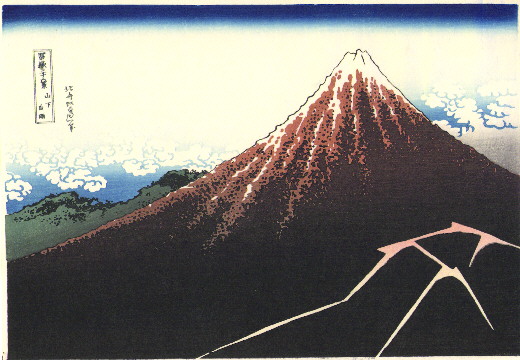Ukiyo-e (¢G,
Ukiyo-e),
"pictures of the floating world", is a genre of Japanese woodblock prints (or woodcuts) and paintings produced between the 17th and the 20th
centuries, featuring motifs of landscapes, the theatre and pleasure
quarters. It is the main artistic genre of woodblock printing in Japan.
Ukiyo, meaning "floating world",
refers to the impetuous young culture that bloomed in the urban centers of Edo (modern-day Tokyo), Osaka, and
Kyoto that were a world unto themselves.
It is an ironic allusion to the homophone term "Sorrowful World" (J«¢), the earthly
plane of death and rebirth from which Buddhists sought release. The art form
rose to great popularity in the metropolitan culture of Edo (Tokyo) during
the second half of the 17th century, originating with the single-color works of
Hishikawa
Moronobu in the 1670s. At first, only
India ink was used, then some
prints were manually colored with a brush, but in the 18th century Suzuki Harunobu developed the technique of
polychrome printing to produce nishiki-e.
Ukiyo-e were affordable because they could be mass-produced. They were meant for mainly
townsmen, who were generally not wealthy enough to afford an original painting.
The original subject of ukiyo-e was city life, in particular activities and
scenes from the entertainment district. Beautiful courtesans, bulky sumo wrestlers and popular actors would be
portrayed while engaged in appealing activities. Later on landscapes also became
popular. Political subjects, and individuals above the lowest strata of society
(courtesans, wrestlers and actors) were not sanctioned in these prints and very
rarely appeared. Sex was not a sanctioned subject either, but continually
appeared in ukiyo-e prints. Artists and publishers were sometimes punished for
creating these sexually explicit shunga.
|
 |

